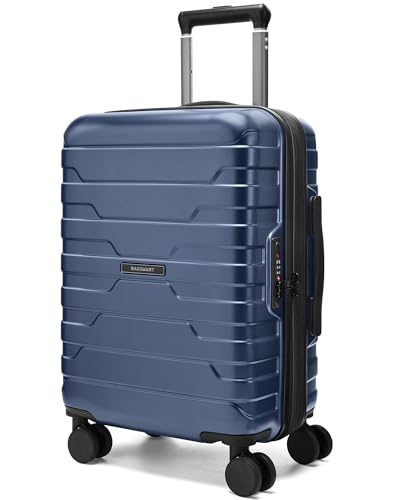



Investing in a durable travel case often correlates with enhanced protection against moisture. The materials used in these products significantly influence their resistance to liquid penetration. Commonly found hard-shell variants typically utilize polycarbonate or ABS plastic, both known for their strength and inherent water resistance.
Seals and zippers are critical components that can determine effectiveness against liquids. Opt for models that feature robust, weather-resistant zippers and rubberized seals. These elements are designed to minimize water ingress and are crucial for safeguarding belongings during unexpected showers or spills.
While no case can guarantee complete waterproofing, many are engineered to withstand light rain or brief exposure to water. Conducting thorough product research and considering customer reviews can provide insights into specific models’ performance in wet conditions. Prioritize options that offer additional protective features to enhance resistance to elements and extend longevity.
Water Resistance of Hard-Shelled Bags
Opt for models with a water-resistant seal to enhance protection from moisture. Many brands offer units designed specifically to prevent leakage during rain or accidental spills.
Consider the following features when evaluating moisture resistance:
- Material: Polycarbonate and ABS plastics provide stronger barriers against wetness compared to softer fabrics.
- Construction: Look for reinforced seams and waterproof zippers, which significantly reduce the risk of infiltration.
- Surface Finish: A textured or treated exterior can help repel water, minimizing absorption.
While no equipment can guarantee complete dryness under all conditions, investing in products with these specifications increases your protection significantly. Additionally, always use inner waterproof bags for added safety of important items.
Material Properties of Hardcase Luggage
The choice of materials significantly influences the durability and resistance of travel gear. Commonly used materials include polycarbonate, ABS plastic, and aluminum. Each has unique characteristics that define performance under various conditions.
Polycarbonate offers high impact resistance while remaining lightweight. It is known for its flexibility, allowing it to absorb shocks without cracking. Moreover, this material often features a glossy finish that may enhance water resistance, providing an additional layer against moisture.
ABS plastic provides a balance between cost and performance. While it may not be as sturdy as polycarbonate, it is lightweight and often treated with coatings to improve water resistance. However, prolonged exposure to moisture can compromise its integrity, indicating the need for careful handling.
Aluminum is less common but favored for its strength and sleek appearance. It is typically associated with premium travel products. While naturally resistant to moisture infiltration, it can dent easily upon impact, which might not be ideal for all scenarios.
Each material’s surface treatments play a significant role in their resistance to moisture. Some products incorporate advanced coatings that repel water and enhance overall protection. Additionally, the design of closures, seams, and zippers contributes greatly to minimizing moisture ingress.
Selecting a model with reinforced edges and secure locking mechanisms can further elevate safeguarding against external elements. Always consider how materials interact with environmental factors to ensure optimal performance during travel.
Design Features that Enhance Water Resistance
Select models equipped with sealed zippers. These closures provide an extra layer of protection, preventing moisture from seeping through the seams. Additionally, every latch and pocket should feature weather-resistant materials that offer robust shielding against the elements.
Enhanced Sealing Techniques
Look for designs that incorporate welded seams, which eliminate needle holes that can be potential water entry points. Such techniques reinforce the integrity of the outer shell and minimize vulnerabilities. Extra features, like rain flaps, can also cover zippers, further enhancing the defensive attributes of the product during inclement weather.
Functional Design Elements
Consider models with rounded edges and tapered profiles. These shapes facilitate better water runoff, preventing pooling and ingress. Additionally, products with drainage holes can expel any accumulated moisture that manages to enter, protecting your belongings. For outdoor enthusiasts, pairing with a best lightweight umbrella for hiking adds an extra layer of protection from unexpected downpours.
Limitations of Hardcase Luggage in Wet Conditions
Opt for alternative types of travel containers if facing heavy rain or submersion risks, as rigid containers, while generally more resistant to moisture than soft-sided options, have limitations. The zippers and seams present vulnerabilities, often allowing liquid infiltration during prolonged exposure. Regular maintenance, such as checking seals and fittings, is crucial to enhance performance in damp environments.
Impact of Design Elements
Corners and edges can act as weak points, where water might infiltrate despite the protective shell’s sturdy nature. Additional components like hand grips and retractable handles may also compromise moisture resistance. A careful inspection of the entire unit before use in wet conditions can prevent undesirable outcomes.
Usage Considerations
While these cases may resist light moisture, they do not guarantee complete protection. Engaging in activities like boating or hiking in heavy rain without supplementary waterproofing measures could lead to significant damage. Consider using waterproof covers or bags as an added layer of security during transit. For cleaning purposes, tools like a best pressure washer for graffiti removal can help maintain the exterior without damaging the protective shell.
Tips for Choosing Water-Resistant Hardcase Luggage
Look for items constructed from polycarbonate or ABS plastic, as these materials offer enhanced durability and resistance to moisture.
Check for a high-quality seal around the zippers and openings; a well-designed zipper prevents moisture ingress and safeguards your belongings. Consider models with overlapping edges that discourage water from penetrating.
Weight and size can influence water resistance. Opt for pieces that provide sturdy construction without excessive bulk, ensuring both portability and protection in inclement weather.
Evaluate the locking mechanisms–secure locks not only protect against theft but also contribute to keeping moisture at bay. Ensure the closures are secure and easy to operate.
Additionally, select models featuring water-repellent coatings or finishes, which provide an extra layer of defense against rain and splashes.
When traveling in unpredictable climates, having a reliable umbrella, such as the best strong umbrella order online, can complement your water-resistant gear.
It’s wise to check customer reviews focusing on experiences related to moisture exposure, ensuring your choice has been tested under similar conditions.







